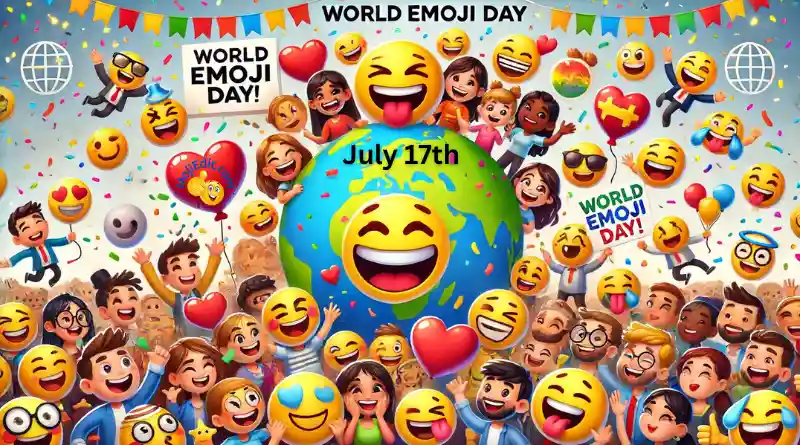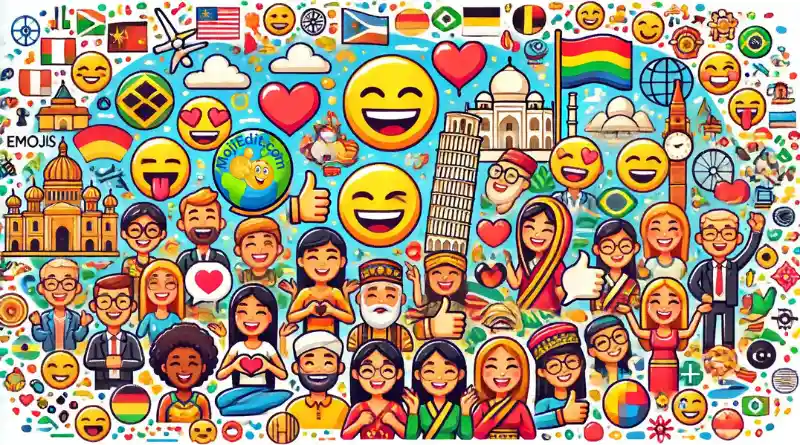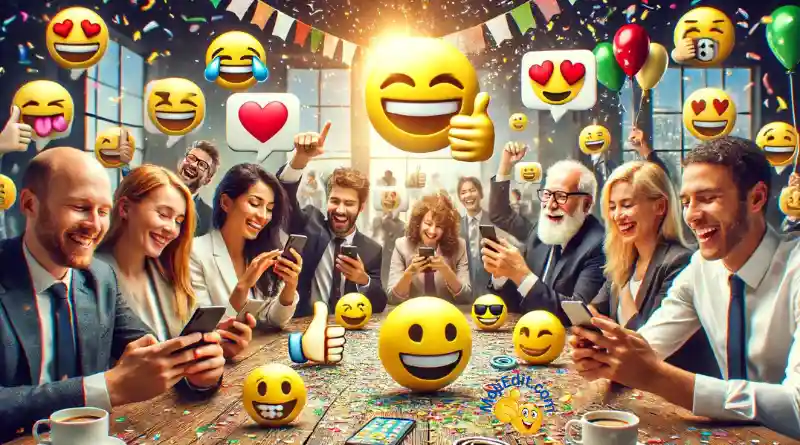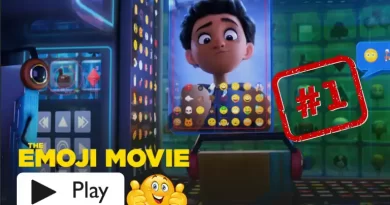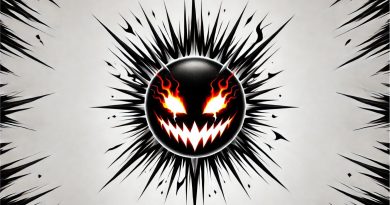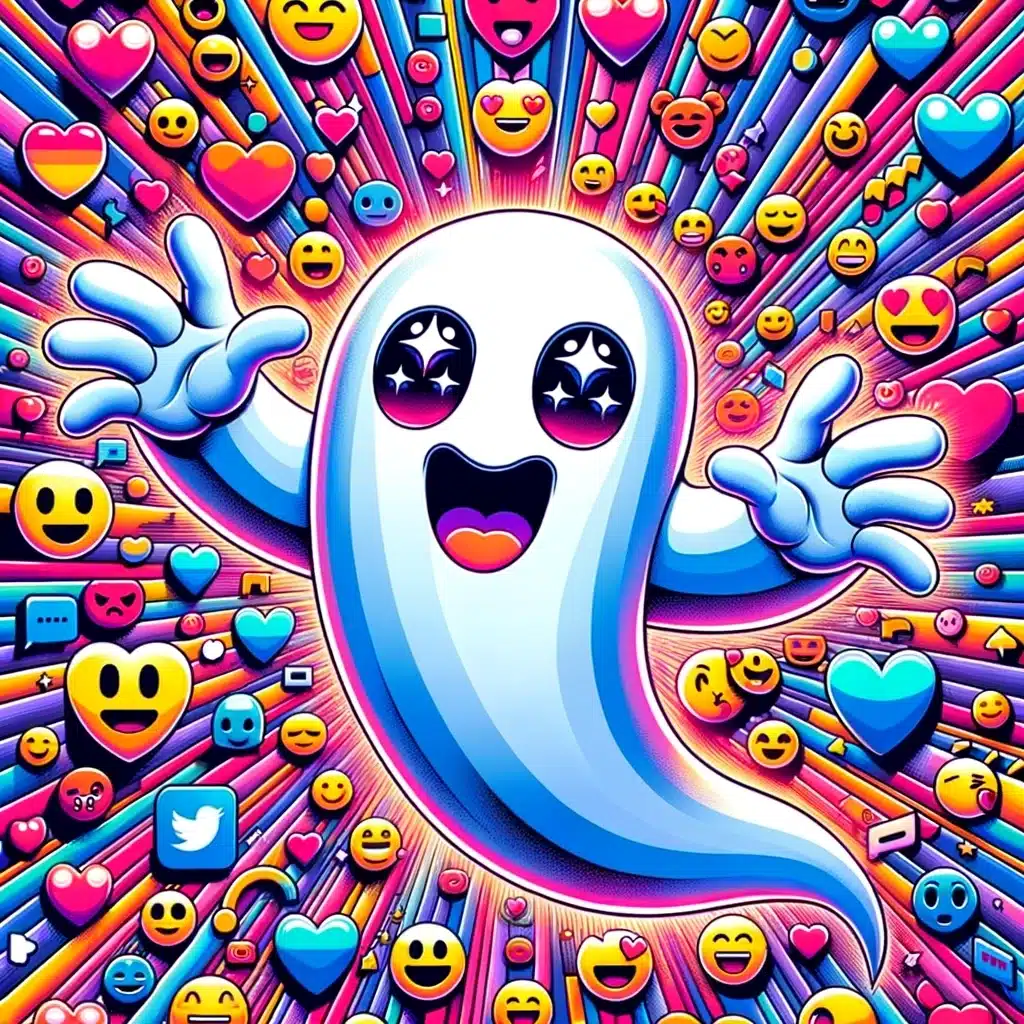World Emoji Day 🌍🎉: Celebrate this July 17th🌟
Discover the History, Fun Facts, and Creative Uses of Emojis
Welcome to the vibrant and expressive world of emojis! 🌍🎉 Every year on July 17th, we celebrate World Emoji Day, a day dedicated to these tiny digital icons that have revolutionized the way we communicate. Whether you’re a fan of the classic smiley 😊 or love using the latest emojis, World Emoji Day is the perfect time to explore the impact of emojis on our daily interactions. Let’s dive into the origins, fun facts, and creative uses of these beloved symbols! 🌟💬
The Origins of World Emoji Day 🌟
The origins of World Emoji Day are as fascinating as the emojis themselves! Jeremy Burge, the founder of Emojipedia, established this celebratory day in 2014. The date, July 17th, was chosen because it’s the date displayed on the 📅 Calendar Emoji, which has a special place in emoji history. This day quickly gained popularity, becoming a global event where people celebrate the joy and creativity emojis bring to our lives.
World Emoji Day highlights the significance of emojis in modern communication. These small icons have transcended language barriers, enabling people from different cultures and backgrounds to express emotions and ideas in a fun and accessible way. From simple smileys to intricate symbols, emojis have become a universal language of the digital age. 🌐✨
What is World Emoji Day? 🎉
World Emoji Day, celebrated every year on July 17th, is a fun and festive occasion dedicated to the beloved little icons that have revolutionized the way we communicate. The date itself has a special significance: it was chosen because the calendar emoji 📅 on Apple devices displays July 17th, marking the day iCal for Mac was first announced at MacWorld Expo in 2002.
Since its inception in 2014 by Emojipedia founder Jeremy Burge, World Emoji Day has grown into a global celebration. People from all over the world participate by sharing their favorite emojis, creating emoji-themed content, and even attending emoji-themed events. Social media platforms light up with colorful emoji-filled posts, and tech companies often use the day to announce new emojis or updates.
World Emoji Day is more than just a day to play with emojis; it’s a recognition of their impact on digital communication. Emojis bridge language gaps, express emotions more vividly than words alone, and add a playful element to our conversations. Whether it’s a heart ❤️ to show love, a laughing face 😂 to share a joke, or a thumbs up 👍 to signal approval, emojis have become an indispensable part of our digital interactions.
The History of Emojis: From Creation to Global Phenomenon 🌐
Emojis have come a long way since their inception, evolving from simple pictographs to a global language used by millions every day. The journey began in the late 1990s when Japanese designer Shigetaka Kurita created the first set of 176 emojis for NTT DoCoMo’s i-mode, a mobile internet platform. These early emojis were designed to add a touch of emotion and clarity to digital communication, filling the gap left by plain text.
As mobile technology spread, so did the popularity of emojis. In 2010, emojis gained international recognition when they were included in the Unicode Standard, a system that ensures text and symbols are consistently represented across different devices and platforms. This standardization allowed emojis to be used universally, transcending language barriers and making digital conversations more expressive and fun. 📱🌏
Today, emojis are an integral part of our digital lives, with new ones being added regularly to reflect the diversity and evolving nature of global communication. From the humble beginnings in Japan to a worldwide cultural phenomenon, the history of emojis is a testament to their power in enhancing and transforming the way we connect with each other. 🌟🗨️
The Evolution of Emojis 📈🌐
Emojis have evolved significantly since their humble beginnings, transforming from simple pictographs to a complex visual language used worldwide. The journey of emojis started in the late 1990s with Japanese designer Shigetaka Kurita, who created the first set of 176 emojis for NTT DoCoMo’s mobile internet platform. These early emojis were designed to add emotion and clarity to digital communication, filling the gap left by plain text. 📱🎨
The big leap for emojis came in 2010 when they were included in the Unicode Standard. This inclusion meant that emojis could be used universally across different devices and platforms, making them a staple of digital communication. Companies like Apple, Google, and Microsoft adopted and expanded the emoji library, each adding their unique style while maintaining the essence of the original designs. 🌟🖥️
Today, there are thousands of emojis, ranging from smiley faces 😊 and hearts ❤️ to animals 🐶 and food items 🍕. Unicode Consortium, the organization responsible for emoji standardization, continues to introduce new emojis every year. They reflect the evolving nature of human communication and the diversity of the global population, with recent additions including emojis representing different skin tones, genders, and cultural symbols. 🌍✨
Emojis have not only transformed personal communication but have also made their way into marketing, branding, and even professional communication. Brands use emojis to engage with their audience, adding a touch of relatability and fun to their messages. Social media platforms are brimming with emoji usage, making conversations more dynamic and expressive. From simple smileys to complex emoji combinations, these tiny icons have become an indispensable part of our digital lives. 💬💡
Cultural Significance of Emojis on World Emoji Day🌐🎨
Emojis have become a universal language, transcending cultural and linguistic barriers to bring people together. Their ability to convey emotions, actions, and ideas visually makes them a powerful tool for communication. 🌍❤️
Emojis Across Different Cultures 🌏✨
In Japan, where emojis originated, they have a rich cultural significance. The word “emoji” itself comes from the Japanese words “e” (絵) meaning picture and “moji” (文字) meaning character. Japanese emojis often reflect cultural elements, such as cherry blossoms 🌸, sushi 🍣, and traditional festivals.
In Western cultures, emojis have become ingrained in everyday communication. They are used to express emotions, from happiness 😊 to sadness 😢, and even complex ideas like sarcasm or irony. Emojis like the thumbs-up 👍 and heart ❤️ have universal meanings, making them widely understood regardless of cultural background.
Popularity and Usage Statistics 📊📈
The popularity of emojis is undeniable. According to Emojipedia, over 5 billion emojis are sent daily on Facebook Messenger alone. The face with tears of joy 😂 and the red heart ❤️ are among the most used emojis worldwide.
Emojis have also made their mark in marketing and branding. Companies use them to connect with younger audiences, add personality to their messages, and make their content more engaging. For example, Domino’s Pizza allows customers to order by tweeting the pizza emoji 🍕, showcasing the playful and functional use of emojis in business.
Emojis in Media and Entertainment 🎬🎤
Emojis have also found their way into media and entertainment. The 2017 film “The Emoji Movie” explored the world inside our smartphones, bringing emojis to life in a colorful and imaginative way. Celebrities and influencers frequently use emojis to engage with their followers, creating a more relatable and personal connection.
Emojis are not just for fun; they also play a role in social and political movements. For instance, the raised fist ✊ emoji has been used in various campaigns to symbolize solidarity and support for social justice causes. These tiny symbols can carry significant weight and meaning, influencing public opinion and raising awareness.
Fun Facts About Emojis 🤩
Emojis are full of surprises, and there’s always something new to learn about these expressive little icons. Here are some fun and fascinating facts that will make you appreciate emojis even more! 🌟💡
1. The Most Used Emoji 😂
Did you know that the “Face with Tears of Joy” emoji 😂 is the most used emoji worldwide? According to Emojipedia, this laughing face has topped the charts for years, capturing the universal expression of laughter and joy. It was even named the Word of the Year by Oxford Dictionaries in 2015! 📈🎉
2. The First Emoji Set 📱
The very first set of emojis was created by Shigetaka Kurita in 1999 for the Japanese mobile operator NTT DoCoMo. This set included 176 simple, pixelated designs, ranging from happy faces to weather icons. These pioneering emojis laid the foundation for the vibrant and diverse emoji library we have today. 🎨🌈
3. Emoji Diversity 🌍✨
In recent years, the Unicode Consortium has made significant efforts to increase the diversity of emojis. This includes the introduction of different skin tones, gender options, and cultural symbols. Now, you can find emojis that represent a wide range of people, professions, and cultures, making digital communication more inclusive and representative. 🤝❤️
4. Emojis in the Courtroom ⚖️
Emojis have made their way into legal settings as well. In several court cases, emojis have been used as evidence to interpret the intent behind text messages and social media posts. Lawyers and judges analyze these tiny icons to understand the emotions and meanings behind digital conversations. 🧐📜
5. The World’s First Emoji Translator 🌐
In 2016, the first official emoji translator was hired by a London-based company. This unique job involved translating various texts and messages into emoji, highlighting the growing importance and recognition of emojis in communication. 📖➡️😊
6. Emoji Day Announcements 📢
Every World Emoji Day, tech companies like Apple and Google reveal new emojis or updates to existing ones. These announcements generate excitement and buzz, as users eagerly anticipate the new additions to their emoji keyboards. 🚀📅
7. The Guinness World Record for Emojis 🏆
In 2017, Guinness World Records awarded the title for the “Largest Gathering of People Dressed as Emojis” to a group in London. Hundreds of participants dressed up as various emojis, celebrating their love for these digital icons in a colorful and fun event. 🎭🥇
8. Emojis as Art 🎨
Emojis have inspired artists and designers around the world. There are exhibitions, murals, and even entire art installations dedicated to emojis. These creative projects showcase the cultural impact and artistic potential of emojis. 🖌️🎨
9. The Emoji Movie 🎬
In 2017, “The Emoji Movie” hit theaters, bringing the world of emojis to the big screen. While the film received mixed reviews, it highlighted the cultural significance of emojis and their place in modern storytelling. 🍿🎥
10. Emojis and Mental Health 💬🧠
Research has shown that using emojis in digital communication can help convey emotions more effectively and enhance the emotional tone of messages. This can improve understanding and empathy in conversations, making digital interactions more emotionally nuanced and supportive. 😊❤️
Emoji Usage: My Favorite Combos and Texts 📲
Emojis add so much fun and personality to our digital conversations! They make our texts more expressive and engaging. Here are some of my favorite emoji combos and tips for creative emoji use. 😊
Fun Emoji Combos 🎉💬
-
Celebration Combo 🥳🎉🎂
- I love using this combo to celebrate birthdays, achievements, or any happy occasion. It instantly conveys joy and festivity.
- Example: “Happy Birthday! 🥳🎉🎂”
-
Movie Night Combo 🍿🎬🎥
- This combo sets the scene for a cozy movie night. Whether I’m watching a new blockbuster or a classic film, these emojis capture the excitement.
- Example: “Ready for movie night? 🍿🎬🎥”
-
Travel Combo ✈️🌍📸
- When I’m planning a trip or sharing travel experiences, I use this combo to express my wanderlust and adventures.
- Example: “Can’t wait for my vacation! ✈️🌍📸”
-
Fitness Combo 🏋️♀️💪🏃♀️
- To share my workout routines or fitness goals, I use this energetic combo to motivate myself and my friends.
- Example: “Just finished a great workout! 🏋️♀️💪🏃♀️”
-
Foodie Combo 🍕🍔🍣
- I’m a foodie at heart, and this combo is perfect for sharing my favorite meals or food cravings.
- Example: “Who’s up for pizza tonight? 🍕🍔🍣”
How I Use Emojis in My Texts 📲
I use emojis to add personality and emotion to my messages. Here are some examples:
-
Expressing Emotions 😊😭❤️
- I often use emojis to express my feelings. A simple heart emoji ❤️ can show love and appreciation, while a laughing face 😂 can share joy and humor.
- Example: “That joke was hilarious! 😂”
-
Enhancing Descriptions 🌸✨🎶
- When describing something, I enhance my texts with relevant emojis. It makes my descriptions more vivid and engaging.
- Example: “The garden looks so beautiful today! 🌸✨”
-
Creating Visual Stories 📖🎨🎬
- I love telling stories through a series of emojis. It’s a fun way to share experiences and moments creatively.
- Example: “Yesterday’s adventure: 🏖️🏄♀️🌅🍔”
Tips for Creative Emoji Use ✨
-
Match Emojis to Your Message 🎯
- Use emojis that complement and enhance the content of your message. For instance, add a sun emoji ☀️ when talking about the weather.
-
Combine Emojis for Impact 💥
- Combine multiple emojis to create a more expressive and impactful message. This technique can make your texts more dynamic and engaging.
-
Use Emojis to Set the Tone 🎭
- Emojis can help set the tone of your message. Use playful emojis for casual chats and more formal ones for professional conversations.
-
Be Mindful of Cultural Differences 🌍
- Different cultures might interpret emojis differently. Be aware of these nuances to avoid misunderstandings.
-
Keep It Fun and Personal 😄💬
- Ultimately, emojis should make your conversations more enjoyable. Have fun with them and let your personality shine through your texts!
Emoji Etiquette: Do’s and Don’ts ✅❌
Emojis are a fantastic way to add personality and emotion to your messages, but using them correctly is key to effective communication. Here are some best practices, common mistakes to avoid, and important contextual and cultural considerations.
Best Practices for Using Emojis ✅
-
Match the Emoji to Your Message 🎯
- Use emojis that complement the content of your message. For instance, if you’re congratulating someone, use celebratory emojis like 🎉 or 🥳.
- Example: “Congrats on your promotion! 🥳🎉”
-
Use Emojis to Enhance Tone and Emotion 😊❤️
- Emojis can help convey emotions more effectively. Use smiley faces 😊 to show happiness or hearts ❤️ to express love and care.
- Example: “Had a great day at the beach! 🏖️🌞😊”
-
Keep It Simple 📝
- Don’t overload your messages with too many emojis. A few well-placed emojis can be more impactful than a message full of them.
- Example: “Let’s catch up soon! ☕️😊”
-
Combine Emojis for Creative Expression 🎨✨
- Combine different emojis to tell a story or create a unique expression. This can make your messages more engaging and fun.
- Example: “Weekend plans: 🛌➡️🏋️♀️➡️🍕➡️📚”
-
Be Mindful of Your Audience 👥
- Consider who you are communicating with and use emojis appropriately. Professional settings might require more conservative use of emojis compared to casual chats with friends.
- Example (Professional): “Looking forward to our meeting tomorrow. 📅”
- Example (Casual): “Can’t wait to see you! 😃💖”
Common Mistakes to Avoid ❌
-
Overusing Emojis 🥴
- Using too many emojis can clutter your message and make it hard to read. Stick to a few relevant ones.
- Example (Avoid): “Hey!!! 😃😃😃 How are you????? 🤔🤔🤔 Let’s hang out sooooon! 🥳🥳🥳”
-
Using the Wrong Emoji 😬
- Make sure the emoji you’re using matches the context. Using a laughing emoji 😂 in a serious conversation can come off as insensitive.
- Example (Avoid): “I’m really sorry for your loss. 😂”
-
Misinterpreting Emojis 🌐
- Different cultures might interpret emojis differently. Be aware of these nuances to avoid misunderstandings.
- Example: In some cultures, the thumbs-up emoji 👍 might be seen as rude or dismissive.
-
Using Emojis in Formal Communication 📧
- Avoid using emojis in very formal communication, such as business emails or professional reports. Stick to plain text to maintain professionalism.
- Example (Avoid): “Dear Mr. Smith, I’m writing to inform you about the upcoming meeting. 🗓️”
Contextual and Cultural Considerations 🌍
-
Cultural Differences 🌏
- Emojis can have different meanings in different cultures. For example, the folded hands emoji 🙏 might be seen as a prayer in some cultures and a gesture of gratitude in others.
- Example: Use the 🙏 emoji carefully, knowing it might be interpreted differently based on the recipient’s cultural background.
-
Context Matters 🧐
- Always consider the context of your message. A playful emoji might be appropriate in a casual conversation but not in a serious discussion.
- Example: “Got the job! 🎉” vs. “Discussing important contract details. 📑”
-
Stay Updated with New Emojis 🚀
- Emojis are constantly evolving. Stay updated with the latest additions to use them effectively in your communication.
- Example: New emojis are often announced on World Emoji Day, so keep an eye out for updates!
By following these guidelines, you can ensure that your use of emojis enhances your communication, making it more expressive, engaging, and appropriate for any situation. 😊👍
Conclusion – World Emoji Day🎬
World Emoji Day is a vibrant celebration of the tiny icons that have revolutionized our digital conversations. From their fascinating history and cultural significance to the fun facts and etiquette tips, emojis have shown just how integral they are to our daily communication. These little symbols add color, emotion, and personality to our messages, making our interactions more engaging and expressive. 🌟📱
As we’ve explored, emojis like the popcorn emoji 🍿 bring a touch of fun to our texts, while others convey a wide range of emotions and ideas. Whether you’re celebrating with friends, expressing your feelings, or joining in global events, emojis are here to enhance your communication in countless ways. 🎉❤️
So, this World Emoji Day, let’s celebrate these amazing icons! Share your favorite emojis, create emoji art, and participate in the fun activities happening online and offline. Don’t forget to use your go-to emojis in your posts and messages to spread the joy. And if you have some cool emoji combos or creative uses, share them with us—we’d love to see how you’re celebrating! 🎊😊
Remember, emojis are more than just cute pictures; they are a universal language that brings us closer together. So, let’s embrace the emoji love and make our digital world a little brighter, one emoji at a time. 🌍✨
World Emoji Day Frequently Asked Questions and Answers
World Emoji Day is a global celebration of emojis, the tiny icons that have transformed digital communication. It takes place every year on July 17th and highlights the fun and expressive power of emojis. People celebrate by sharing their favorite emojis, participating in events, and enjoying emoji-themed activities.
World Emoji Day was created by Jeremy Burge, the founder of Emojipedia, in 2014. Burge chose the date based on the calendar emoji 📅, which shows July 17th on iOS devices. The day quickly gained popularity and became an annual celebration.
July 17th was chosen because it’s the date displayed on the calendar emoji 📅 on Apple devices. This connection made it the perfect date to celebrate all things emoji. Since then, July 17th has been recognized worldwide as World Emoji Day.
Emojis originated in Japan in the late 1990s and were created by Shigetaka Kurita. The “Face with Tears of Joy” emoji 😂 is the most used emoji worldwide. Emojis have even been used as evidence in court cases to interpret the intent behind digital messages.
The most popular emojis include the “Face with Tears of Joy” 😂, the red heart ❤️, and the “Smiling Face with Heart-Eyes” 😍. These emojis are widely used to express happiness, love, and affection in digital communication.

